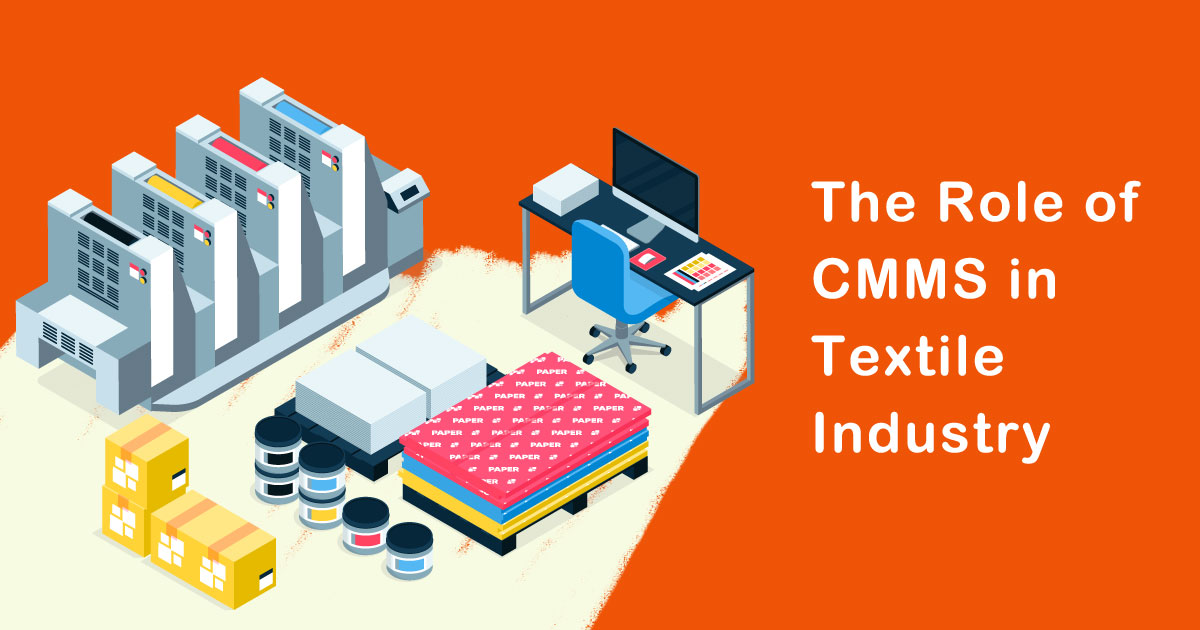Introduction
In today’s fast-paced and competitive business environment, the effective management of assets and resources plays a critical role in the success of any industry. The textile industry, being one of the largest and most dynamic sectors in India, is no exception to this rule. With its complex supply chain, diverse machinery, and intricate production processes, the textile industry faces unique challenges in maintaining operational efficiency and maximizing productivity. This is where Computerized Maintenance Management Systems (CMMS) come into play. In this article, we will explore the significant role of CMMS in the textile industry, focusing on the Indian context.
Understanding CMMS
A Computerized Maintenance Management System (CMMS) is a software-based solution that aids organizations in planning, tracking, and managing maintenance activities and resources. It provides a centralized platform for streamlining maintenance processes, scheduling preventive maintenance, managing work orders, tracking asset performance, and generating valuable reports and insights.
Improved Maintenance Planning and Scheduling
One of the primary benefits of implementing CMMS in the textile industry is improved maintenance planning and scheduling. The textile industry heavily relies on machinery and equipment to meet production targets and quality standards. Unplanned downtime due to equipment failures can have a significant impact on production output and profitability. CMMS enables textile manufacturers to create preventive maintenance schedules, ensuring that equipment undergoes regular inspections, lubrication, and servicing. By proactively addressing potential issues, CMMS helps minimize breakdowns, reduces unplanned downtime, and extends the lifespan of critical assets.
Optimized Spare Parts Inventory Management
Effective spare parts management is crucial for uninterrupted operations in the textile industry. CMMS offers a comprehensive inventory management module that allows textile manufacturers to track spare parts usage, maintain optimal stock levels, and streamline procurement processes. With accurate inventory data available at their fingertips, maintenance teams can ensure the availability of critical components, reducing the time and costs associated with emergency repairs.
Enhanced Work Order Management
The textile industry involves numerous maintenance tasks, ranging from routine inspections to major equipment overhauls. CMMS simplifies work order management by automating the creation, tracking, and assignment of work orders. Maintenance technicians can access work orders through mobile devices, enabling them to receive real-time updates, record work details, and submit completion reports. This streamlined process improves communication, reduces paperwork, and ensures that maintenance tasks are completed promptly and efficiently.
Predictive Maintenance and Asset Performance Monitoring
CMMS can integrate with various technologies, such as sensors and Internet of Things (IoT) devices, to enable predictive maintenance and asset performance monitoring. By collecting real-time data on equipment conditions, CMMS can identify anomalies and potential failures before they occur. This allows maintenance teams to take proactive measures, such as scheduling maintenance activities or replacing components, to prevent costly breakdowns and optimize asset performance. In the textile industry, where machinery downtime can result in significant financial losses, predictive maintenance enabled by CMMS is a game-changer.
Data-Driven Decision Making
Another advantage of CMMS in the textile industry is its ability to generate valuable insights through data analysis. CMMS collects and stores data related to maintenance activities, equipment performance, downtime incidents, and more. By analyzing this data, textile manufacturers can identify trends, uncover areas for improvement, and make data-driven decisions. For example, analyzing equipment performance data may reveal the need for equipment upgrades or changes in maintenance practices to optimize efficiency and reduce costs.
Conclusion
In conclusion, CMMS plays a crucial role in the textile industry, helping organizations streamline maintenance processes, improve asset reliability, and optimize productivity. In the Indian context, where the textile industry is a significant contributor to the economy, adopting CMMS can lead to substantial cost savings, increased operational efficiency, and improved competitiveness. By leveraging the power of CMMS, textile manufacturers can stay ahead in a highly competitive market and meet the growing demands of customers.
With improved maintenance planning and scheduling, optimized spare parts inventory management, enhanced work order management, and the implementation of predictive maintenance strategies, CMMS empowers textile manufacturers to reduce downtime, extend the lifespan of equipment, and enhance overall operational efficiency. Moreover, the data-driven insights generated by CMMS enable informed decision-making, enabling organizations to identify areas for improvement and drive continuous process enhancements.
As the textile industry in India continues to grow and evolve, implementing CMMS becomes increasingly essential for sustainable success. By leveraging the power of technology and data, textile manufacturers can streamline their maintenance operations, increase productivity, and ultimately deliver high-quality products to their customers.
It is clear that CMMS is not just a luxury but a necessity in the textile industry. Organizations that embrace this technology gain a competitive edge by maximizing their asset utilization, minimizing downtime, and reducing maintenance costs. As the industry continues to evolve, it is imperative for textile manufacturers to invest in advanced solutions like CMMS to stay ahead of the curve and thrive in the dynamic business landscape.
In conclusion, CMMS is a game-changer for the textile industry in India. By enabling efficient maintenance planning, optimizing spare parts inventory, enhancing work order management, implementing predictive maintenance strategies, and facilitating data-driven decision-making, CMMS empowers textile manufacturers to achieve operational excellence and drive sustainable growth. The adoption of CMMS in the Indian textile industry is not just a trend; it is a strategic imperative for organizations looking to thrive in a competitive marketplace. Embracing CMMS is the pathway to success and a bright future for the textile industry in India.








